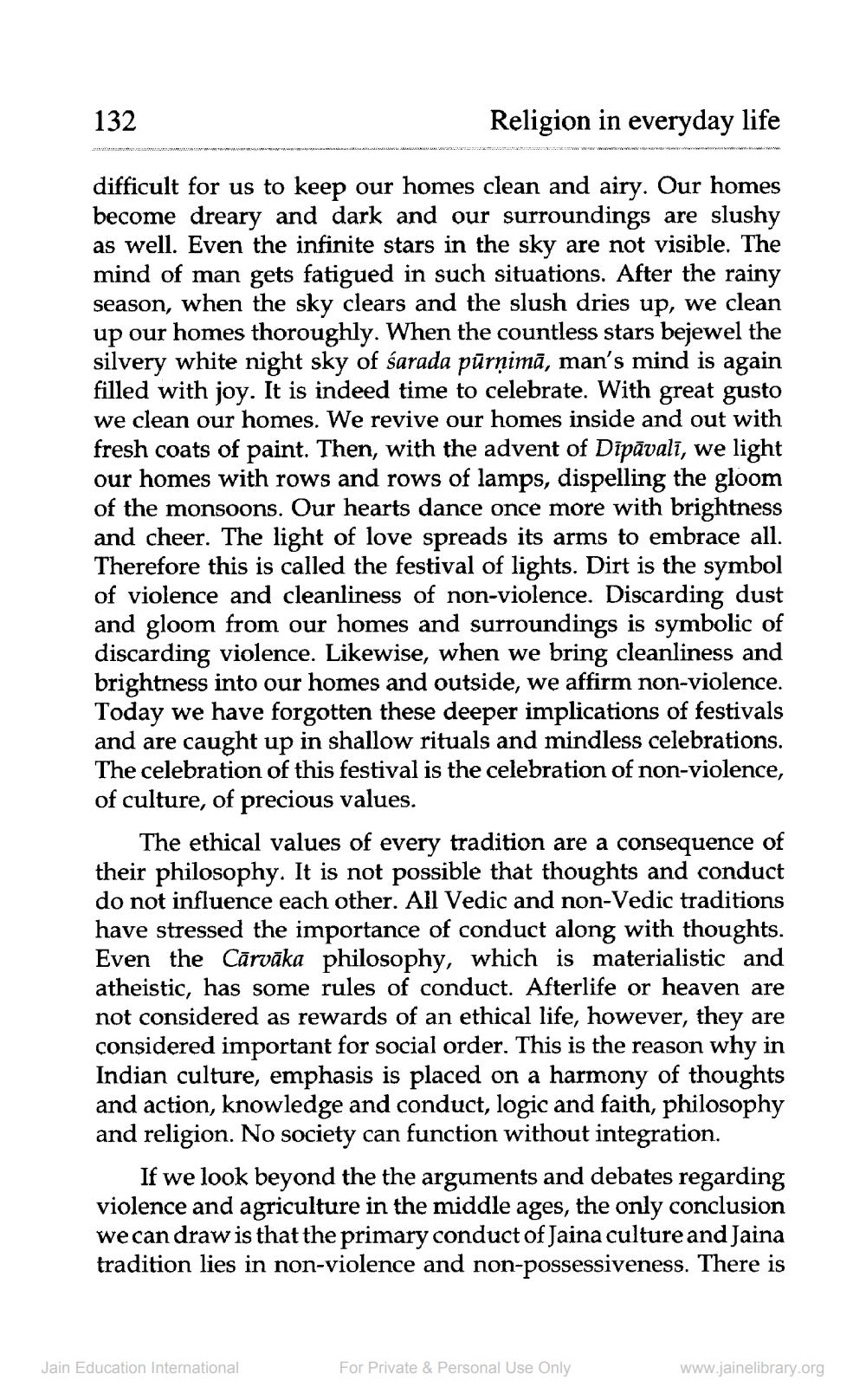________________
Religion in everyday life
difficult for us to keep our homes clean and airy. Our homes become dreary and dark and our surroundings are slushy as well. Even the infinite stars in the sky are not visible. The mind of man gets fatigued in such situations. After the rainy season, when the sky clears and the slush dries up, we clean up our homes thoroughly. When the countless stars bejewel the silvery white night sky of sarada pūrṇimā, man's mind is again filled with joy. It is indeed time to celebrate. With great gusto we clean our homes. We revive our homes inside and out with fresh coats of paint. Then, with the advent of Dīpāvalī, we light our homes with rows and rows of lamps, dispelling the gloom of the monsoons. Our hearts dance once more with brightness and cheer. The light of love spreads its arms to embrace all. Therefore this is called the festival of lights. Dirt is the symbol of violence and cleanliness of non-violence. Discarding dust and gloom from our homes and surroundings is symbolic of discarding violence. Likewise, when we bring cleanliness and brightness into our homes and outside, we affirm non-violence. Today we have forgotten these deeper implications of festivals and are caught up in shallow rituals and mindless celebrations. The celebration of this festival is the celebration of non-violence, of culture, of precious values.
132
The ethical values of every tradition are a consequence of their philosophy. It is not possible that thoughts and conduct do not influence each other. All Vedic and non-Vedic traditions have stressed the importance of conduct along with thoughts. Even the Cārvāka philosophy, which is materialistic and atheistic, has some rules of conduct. Afterlife or heaven are not considered as rewards of an ethical life, however, they are considered important for social order. This is the reason why in Indian culture, emphasis is placed on a harmony of thoughts and action, knowledge and conduct, logic and faith, philosophy and religion. No society can function without integration.
If we look beyond the the arguments and debates regarding violence and agriculture in the middle ages, the only conclusion we can draw is that the primary conduct of Jaina culture and Jaina tradition lies in non-violence and non-possessiveness. There is
Jain Education International
For Private & Personal Use Only
www.jainelibrary.org




